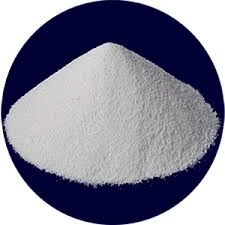- Afrikaans
- Albanian
- Amharic
- Arabic
- Armenian
- Azerbaijani
- Basque
- Belarusian
- Bengali
- Bosnian
- Bulgarian
- Catalan
- Cebuano
- Corsican
- Croatian
- Czech
- Danish
- Dutch
- English
- Esperanto
- Estonian
- Finnish
- French
- Frisian
- Galician
- Georgian
- German
- Greek
- Gujarati
- Haitian Creole
- hausa
- hawaiian
- Hebrew
- Hindi
- Miao
- Hungarian
- Icelandic
- igbo
- Indonesian
- irish
- Italian
- Japanese
- Javanese
- Kannada
- kazakh
- Khmer
- Rwandese
- Korean
- Kurdish
- Kyrgyz
- Lao
- Latin
- Latvian
- Lithuanian
- Luxembourgish
- Macedonian
- Malgashi
- Malay
- Malayalam
- Maltese
- Maori
- Marathi
- Mongolian
- Myanmar
- Nepali
- Norwegian
- Norwegian
- Occitan
- Pashto
- Persian
- Polish
- Portuguese
- Punjabi
- Romanian
- Russian
- Samoan
- Scottish Gaelic
- Serbian
- Sesotho
- Shona
- Sindhi
- Sinhala
- Slovak
- Slovenian
- Somali
- Spanish
- Sundanese
- Swahili
- Swedish
- Tagalog
- Tajik
- Tamil
- Tatar
- Telugu
- Thai
- Turkish
- Turkmen
- Ukrainian
- Urdu
- Uighur
- Uzbek
- Vietnamese
- Welsh
- Bantu
- Yiddish
- Yoruba
- Zulu
10 月 . 18, 2024 10:45 Back to list
Effective Methods for Poultry House Disinfection and Maintenance of Hygiene Standards
Disinfection of Poultry Houses Ensuring Healthy Livestock and Safe Food Production
The poultry industry plays a crucial role in global food production, providing a significant source of meat and eggs for billions of people. However, maintaining the health of poultry can be a challenging task, particularly in environments conducive to disease transmission. One critical aspect of managing poultry health is the disinfection of poultry houses. Effective disinfection practices are essential for preventing outbreaks of diseases, ensuring animal welfare, and safeguarding public health.
Importance of Disinfection in Poultry Housing
Poultry houses are often crowded environments that facilitate the spread of pathogens among birds. Diseases such as avian influenza, Newcastle disease, and other viral, bacterial, and parasitic infections can wreak havoc on flocks, leading to economic losses and public health concerns. Disinfection helps to significantly reduce the presence of harmful microorganisms in the poultry environment, thus reducing the risk of disease transmission.
Besides disease control, disinfection also contributes to the overall efficiency of poultry production. Healthy birds grow faster and produce more eggs, ultimately leading to better economic returns for farmers. Thus, investing in proper disinfection methods is not only a matter of animal welfare but also a smart business decision.
Steps for Effective Disinfection
The process of disinfecting poultry houses typically involves several key steps
1. Cleaning Before disinfection can occur, it is crucial to thoroughly clean the poultry house. This process involves the removal of all organic matter, including droppings, feed, and dust. High-pressure washing may be used to ensure that surfaces are free of debris, as organic materials can neutralize disinfectants and render them ineffective.
2. Drying Once cleaning is complete, the area should be dried completely. Moisture can inhibit the efficacy of many disinfectants, so ensuring that surfaces are dry is essential for successful disinfection.
disinfection of poultry house

3. Disinfection After the cleaning and drying process, a suitable disinfectant should be applied. There are several types of disinfectants available, including quaternary ammonium compounds, phenolic compounds, and hydrogen peroxide-based products. It is important to select a disinfectant that is effective against the specific pathogens of concern and one that is safe for use around poultry.
4. Contact Time For a disinfectant to be effective, it needs adequate contact time with the surface being treated. This can vary depending on the disinfectant used, so it’s essential to follow the manufacturer's instructions regarding application and contact duration.
5. Ventilation After disinfection, adequate ventilation is important to ensure that any harmful fumes dissipate before introducing new birds into the area. Proper airflow also helps to dry surfaces and prevents the growth of mold and other pathogens.
6. Monitoring and Review Regular monitoring of the disinfection protocols and the environmental conditions in poultry houses is crucial. Farm managers should review their disinfection practices, assess their effectiveness, and make necessary adjustments based on the results of health inspections and disease outbreaks.
Challenges in Disinfection
While the importance of disinfection is clear, several challenges may hinder effective practice. These include resistance to disinfectants, the presence of biofilms, and variations in cleaning staff proficiency. Furthermore, environmental sustainability concerns are rising, prompting the industry to seek more eco-friendly disinfectant options that are both effective and safe.
Conclusion
In summary, disinfection of poultry houses is a vital practice for ensuring the health of livestock and the safety of food production. By implementing thorough cleaning and effective disinfection protocols, poultry producers can significantly reduce the risk of disease outbreaks, improve bird welfare, and enhance productivity. The poultry industry, therefore, must prioritize these practices as part of comprehensive health management strategies, ultimately benefiting both producers and consumers in the long run.
-
The Power of Radix Isatidis Extract for Your Health and Wellness
NewsOct.29,2024
-
Neomycin Sulfate Soluble Powder: A Versatile Solution for Pet Health
NewsOct.29,2024
-
Lincomycin Hydrochloride Soluble Powder – The Essential Solution
NewsOct.29,2024
-
Garamycin Gentamicin Sulfate for Effective Infection Control
NewsOct.29,2024
-
Doxycycline Hyclate Soluble Powder: Your Antibiotic Needs
NewsOct.29,2024
-
Tilmicosin Premix: The Ultimate Solution for Poultry Health
NewsOct.29,2024













